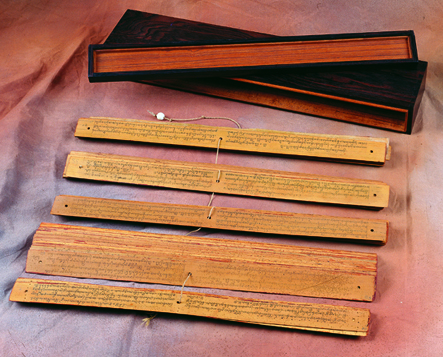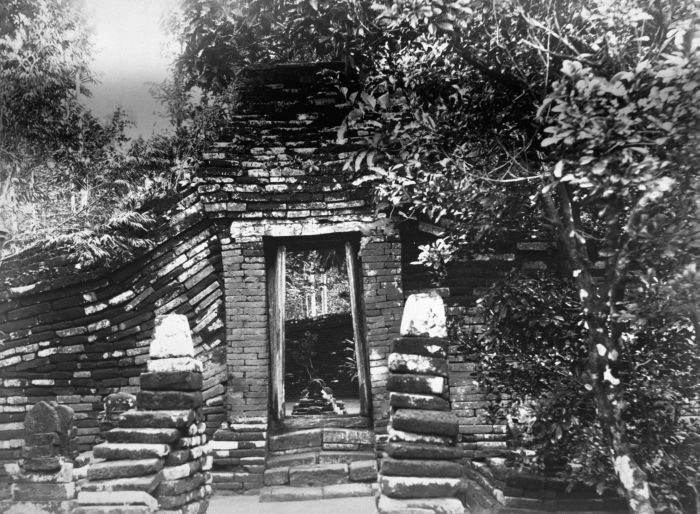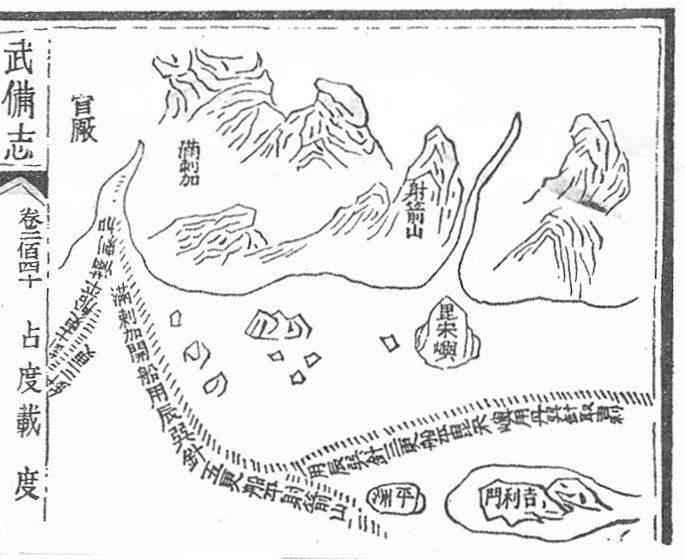|
Wikramawardhana
Vikramavardhana (), often known by his regnal name Bhra Hyang Wisesa was a Javanese emperor and succeeded Hayam Wuruk as the fifth monarch of the Majapahit, reigning from 1389 to 1429. Early life His ksatria name was Raden Gagak Sali as stated in Pararaton. He was the nephew and also the son-in-law of the previous monarch, King Rajasanagara Dyah Hayam Wuruk. His mother was the king's younger sister, Rajasaduhiteswari or Wardhanaduhiteswari or Iswari in short. Krom interpreted it as "the illustrious Wardhana's daughter, Iswari". The term "Wardhana" referred to Prince consort Kertawardhana, husband of Queen Tribhuwana. She was given the title ''Bhre'' Pajang and married to Singhawardhana, ''Bhre'' Paguhan. According to Pararaton, Vikramavardhana had two younger sisters. The older one was Nagarawardhani, she would be the wife of Vikramavardhana's rival in the future. She was originally the ''Bhre'' Wirabhumi before the title shifted to her husband and she became ''Bhre'' Lasem. ... [...More Info...] [...Related Items...] OR: [Wikipedia] [Google] [Baidu] |
Regreg War
The Regreg War (often erroneously called the ''Paregreg'') was a civil war that took place in 1404–1406 within the Javanese people, Javanese empire of Majapahit. The conflict was fought as a war of independence between the ''Trowulan, Kedhaton Kulon'' (Western court) led by Wikramawardhana against the breakaway ''Lumajang, Kedhaton Wetan'' (Eastern court) of Blambangan Kingdom, Blambangan led by Bhre Wirabhumi. This war of rivalry and secession had caused calamity, crisis, court's preoccupation, the drain of financial resources, and exhaustion, which is thought to be one of the causes of Majapahit's decline in the following years. Terminology This conflict is usually referred to as the Paregreg, but that term is based on a linguistic misunderstanding. In the Pararaton chronicle, in which the term for this war is found, events are labelled by adding the prefix ''pa-'' to one or more keywords. For example, the Javanese attack on Malayu in Sumatra in 1275 is called ''pamalayu'', th ... [...More Info...] [...Related Items...] OR: [Wikipedia] [Google] [Baidu] |
Majapahit
Majapahit (; (eastern and central dialect) or (western dialect)), also known as Wilwatikta (; ), was a Javanese people, Javanese Hinduism, Hindu-Buddhism, Buddhist thalassocracy, thalassocratic empire in Southeast Asia based on the island of Java (in modern-day Indonesia). At its greatest extent, following significant military expansions, the territory of the empire and its tributary states covered almost the entire Nusantara (term), Nusantara archipelago, spanning both Asia and Oceania. After a Regreg war, civil war that weakened control over the vassal states, the empire slowly declined before collapsing in 1527 due to an Demak–Majapahit conflicts, invasion by the Demak Sultanate, Sultanate of Demak. The fall of Majapahit saw the rise of History of Indonesia#Islamic civilizations, Islamic kingdoms in Java. Established by Raden Wijaya in 1292, Majapahit rose to power after the Mongol invasion of Java and reached its peak during the era of the queen Tribhuwana Wijayatungga ... [...More Info...] [...Related Items...] OR: [Wikipedia] [Google] [Baidu] |
Hayam Wuruk
Hayam Vuruk ( Indonesian: ''Hayam Wuruk'', Sanskrit: हयम् वुरुक्, Kawi: ꦲꦪꦩ꧀ꦮꦸꦫꦸꦏ꧀) (1334–1389), also called Rajasanagara, Pa-ta-na-pa-na-wu, or Bhatara Prabhu after 1350, was a Javanese Hindu emperor from the Rajasa dynasty and the 4th emperor of the Majapahit Empire. Together with his prime minister Gajah Mada, he reigned the empire at the time of its greatest power. During his reign, the Hindu epics, the Ramayana and the Mahabharata, became ingrained in the culture and worldview of the Javanese through the ''wayang kulit'' (leather puppets).Mark Juergensmeyer and Wade Clark Roof, 2012Encyclopedia of Global Religion Volume 1, Page 557. He was preceded by Tribhuwana Wijayatunggadewi, and succeeded by his son-in-law Wikramawardhana. Most of the accounts of his life were taken from the '' Nagarakretagama'', a eulogy to Hayam Wuruk, and the ''Pararaton'' ("Book of Kings"), a Javanese historical chronicle. Early life According to the ... [...More Info...] [...Related Items...] OR: [Wikipedia] [Google] [Baidu] |
Suhita
Suhita or Soheeta (died 1447), was a Javanese queen regnant and the sixth monarch of the Majapahit empire, ruling from 1429 to 1447. Early life and succession She was the daughter of King Wikramawardhana (formally Bhra Hyang Wisesa), her predecessor. Her mother was strongly possibly his principal wife, Kusumawardhani seeing that her name was written without prefixes ''rabi anom'', ''rabi haji'', or ''rabi ksatria'' usually used to refer a son or daughter of a concubine. If so, her parents as well as the king and the queen were first cousins. She had two older brothers: Hyang Wekas ing Sukha, and 2nd Prince of Tumapel also a younger brother: Dyah Kertawijaya. Both of her older brothers died during the reign of Wikramawardhana. As he died in 1429, Pararaton reported that the empire was ruled by a queen regnant or ''prabhu stri''. Suhita was the woman suspected. Later, she was succeeded by her younger brother Dyah Kertawijaya by the regnal name King Wijayaparakramawardhana. ... [...More Info...] [...Related Items...] OR: [Wikipedia] [Google] [Baidu] |
Nagarawardhani
Nagarawardhani was the niece of King Majapahit, Hayam Wuruk. Shaadily, Hassan. ''Ensiklopedia Indonesia'' Volume 4. Jakarta: Ichtiar Baru dan Van Hoeve Early life According to the book of Nagarakretagama, she was the daughter of ''Bhre'' Lasem, possibly Princess Indudevi. However, according to the book of Pararaton, she was the daughter of the King's sister, Princess Isywari, also known as ''Bhre'' Pajang. Marriage Nagarawardhani lived in the days of Bubat War when Hayam Wuruk fought against the Kingdom of Padjadjaran to compete for Padjadjaran princess, Dyah Pitaloka. Nagarawardhani was later married to Bhre Wirabhumi, also the son of King Hayam Wuruk whose mother was one of the royal concubines. Nagarawardhani also known as ''Be Laem Alemu'', which means ''flat'' in Bhre Lasem. Muljana, Slamet, 2006.'' Tafsir Sejarah: Nagarakretagama''. Yogyakarta: LKiS. The story of Nagarawardhani and her husband, Bhre Wirabuhmi, is told in the book ''Nagarakretagama'', and in ''Parar ... [...More Info...] [...Related Items...] OR: [Wikipedia] [Google] [Baidu] |
Rajasa Dynasty
The Rajasa dynasty ( Javanese: ꦫꦴꦗꦱ, IAST: ''Rājasa'') was the ruling dynasty of Singhasari and later Majapahit during the 13th to 15th centuries in eastern Java. The rulers of the Rajasa dynasty trace their origins back to Śrī Ranggah Rājasa, who founded the dynasty in the early 13th century. According to Pararaton, Ranggah Rājasa was born in the town of Tumapel (present day Malang, East Java). He was considered as the founder of both the Singhasari and Majapahit line of monarchs. In Sanskrit and Old Javanese, the term ''rājasa'' means either "passion" or "dust"/"soil". List of rulers Singhasari period: # Ken Arok (1222—1227) # Anusapati (1227—1248) # Panji Tohjaya (1248) # Vishnuwardhana-Narasimhamurti (1248—1268) # Kertanegara (1268—1292) Majapahit period: # Raden Wijaya (1294—1309) # Jayanegara (1309—1328) # Queen regnant Tribhuwana Wijayatunggadewi (1328—1350) # Hayam Wuruk (1350—1389) # Wikramawardhana (1389—1429) # Queen regnant Suhita ( ... [...More Info...] [...Related Items...] OR: [Wikipedia] [Google] [Baidu] |
Kertawijaya
Kertawijaya or Dyah Kertawijaya was the seventh monarch of Majapahit reigning from 1447 to 1451 by the regnal name Sri Maharaja Wijayaparakramawardhana. Reign Prince Kertawijaya succeeded his older sister Suhita in 1447. Natural disasters frequently occur during his reign including earthquakes and mount eruptions. One famous-one incident was Tidung Gelanting's killing led by his nephew Prince of Paguhan, son of Prince of Tumapel. Identification between Kertawijaya and Brawijaya Brawijaya is the name or title of well-known Majapahit king for modern Javanese people pursuant to some manuscripts written in the next eras. A tomb of Princess of Champa found in Mojokerto with the year of 1448 led the Javanese believed that she was one of King Brawijaya's principal wife. In addition, the name of Kertawijaya as the ancestor of Raden Patah found in Queen Kalinyamat's tomb located in Jepara. Another story told that King Brawijaya's wife was a Muslim's queen Dwarawati of Champa King ... [...More Info...] [...Related Items...] OR: [Wikipedia] [Google] [Baidu] |
Pajang
The Kingdom of Pajang or Sultanate of Pajang (; 1568–1586) was a short-lived Muslim state in Java. It was established by Adiwijaya or Jaka Tingkir, Lord of Boyolali, after a civil war and was a successor to Sultanate of Demak. Adiwijaya claimed to be a descendant of Brawijaya V, the last king of the Majapahit empire, and Trenggana, the sultan of Demak. Pajang is based in Central Java as a continuation of the Demak Sultanate. The palace complex at this time only remains in the form of the boundaries of its foundations which are on the border of - Surakarta and , Kartasura, Sukoharjo. In the last battle against the last claimant of Demak, the vicious Arya Penangsang, Jaka Tingkir commissioned his greatest vassal, Ki Ageng Pamanahan, and his son, Sutawijaya, to destroy Arya Penangsang's army. The two managed to defeat and kill Arya Penangsang and were thus awarded a fief in a forest called Alas Mentaok, now Kotagede, on which they founded their base for the future capi ... [...More Info...] [...Related Items...] OR: [Wikipedia] [Google] [Baidu] |
Parameswara (king)
Parameswara (1344 – c. 1414), thought to be the same person named in the ''Malay Annals'' as Iskandar Shah, was the last king of Singapura and the founder of Malacca. According to the ''Malay Annals'', he ruled Singapura from 1389 to 1398. The king fled the island kingdom after a Majapahit naval invasion in 1398 and founded his new stronghold on the mouth of Bertam river in 1402. Within decades, the new city grew rapidly to become the capital of the Malacca Sultanate. Portuguese accounts however, written a hundred years after his death, suggest he was from Palembang in Sumatra and usurped the throne of Singapura; he was driven out, either by the Siamese or the Majapahit, and went on to found Malacca. Etymology The name Parameswara is found in Portuguese sources such as ''Suma Oriental'', and written ''Paramicura'' or ''Parimicura''. Parameswara is a Hindu name derived from the Sanskrit word ''Parameśvara'' (), a concept literally meaning the "Supreme Lord". The word "para ... [...More Info...] [...Related Items...] OR: [Wikipedia] [Google] [Baidu] |
Ming Dynasty
The Ming dynasty, officially the Great Ming, was an Dynasties of China, imperial dynasty of China that ruled from 1368 to 1644, following the collapse of the Mongol Empire, Mongol-led Yuan dynasty. The Ming was the last imperial dynasty of China ruled by the Han people, the majority ethnic group in China. Although the primary capital of Beijing fell in 1644 to a rebellion led by Li Zicheng (who established the short-lived Shun dynasty), numerous rump state, rump regimes ruled by remnants of the House of Zhu, Ming imperial family, collectively called the Southern Ming, survived until 1662. The Ming dynasty's founder, the Hongwu Emperor (1368–1398), attempted to create a society of self-sufficient rural communities ordered in a rigid, immobile system that would guarantee and support a permanent class of soldiers for his dynasty: the empire's standing army exceeded one million troops and the naval history of China, navy's dockyards in Nanjing were the largest in the world. H ... [...More Info...] [...Related Items...] OR: [Wikipedia] [Google] [Baidu] |



